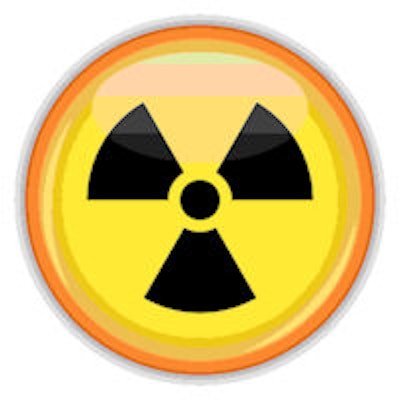
In the wake of the French radiation overdose scandal, plans to issue pan-European guidance on image justification are moving ahead, but they may not be sufficient to guarantee patient safety, experts believe.
Responding to a growing concern over adverse events, guidelines from the European Commission (EC, project number ENER/D4/315-2011) would provide criteria for all clinicians making image requests, including for diagnostic CT and nuclear scans. The risks of radiation in medical procedures have been highlighted sporadically by high-profile cases, the latest being the overirradiation between 2001 and 2006 of nearly 450 cancer patients at Epinal in northern France by three doctors who received jail sentences in February.
In diagnostics, however, while radiation protection remains paramount, radiologists and other stakeholders question whether any more justification guidance is needed at the national level. They emphasize that guidelines either already exist or are in preparation in 25 of 30 European countries. Furthermore, there appears to be discrepancy in the authorities' desire for curbing radiation risk through such guidelines and their capacity to check that they are implemented, according to Dr. Yves Menu, professor and head of radiology at Saint Antoine Hospital in Paris, and president of the 2011 ECR.
 The ESR fears European justification guidance would be expensive and ineffective, according to Dr. Yves Menu. Image courtesy of the ESR.
The ESR fears European justification guidance would be expensive and ineffective, according to Dr. Yves Menu. Image courtesy of the ESR."Authorities are keen to check that protocols and guidelines are public and known by all relevant members of staff. However, although guidance exists, justification of procedure chosen for the indication is not checked," he said.
Under European Directive 97/43 Euratom, France has recently updated its own guidelines for clinicians making imaging requests in the guide compiled by the French Society of Radiology (Société Française de Radiologie, SFR) and the French Society of Nuclear Medicine (Société Française de Médecine Nucléaire, SFMN) under the aegis of the National Health Authority (Haute Autorité de Santé, HAS) and Nuclear Safety Authority (Autorité de Sûreté Nucléaire, ASN). Meanwhile, the U.K. Royal College of Radiologists has released guidance as an e-document, i-Refer.
"The ESR [European Society of Radiology] believes that European justification guidance would be very expensive, requiring many work hours to complete, repeat national guidance work, and alone would not greatly impact clinical decision making in terms of imaging referrals," Menu said, pointing to the three years and hundreds of work hours involved in completing the national version.
There is also doubt that such documents are fully used by referring clinicians, a view supported by an ESR-led stakeholder survey, carried out in spring 2012 as part of the response to the EC's 2011 tender for the pan-European document.
The survey concluded that guidance is probably only used in 90% of referrals, and along with stronger legal European measures, application of guidelines would be ensured through the use of clinical decision support (CDS) which should interface with existing electronic requesting systems (computerized physician order entry systems) and RIS.
 A computerized clinical decision-support system can ensure guidelines are followed and prevent unnecessary exams, Dr. Lluís Donoso noted.
A computerized clinical decision-support system can ensure guidelines are followed and prevent unnecessary exams, Dr. Lluís Donoso noted.Developed and piloted at Massachusetts General Hospital in Boston, ACR Select combines the American College of Radiology (ACR) justification guidelines and clinical decision-support software. Now translated into Spanish, the product is being integrated into Barcelona Hospital Clinic's data entry and e-health IT systems and will hopefully be fully operational before the summer, according to chair of the hospital's imaging department and second vice president of the ESR, Dr. Lluís Donoso.
At the time of a request, the system will ask the referring doctor for various data about the patient's condition, and then will be able to score how appropriate the request is on a scale of 1 to 9. If not appropriate, the clinician will have to meet more criteria through the provision of further details for the examination to be scheduled.
ESR envisages piloting a similar product, provisionally named ESR Select, tailored to European clinical scenarios and using ESR criteria based on the U.K. and French justification guidelines. This month, Donoso is due to meet with the heads of the European Radiological Protection Competent Authorities (HERCA) in Brussels to discuss the technical aspects and financial feasibility of such a move, and he is well-placed to attest to the usefulness of an automated CDS system.
"A CDS system is the only way to ensure that any guidelines are used in practice as clinicians will get immediate feedback on a request. The aim is for us to do better exams, not more, keep radiation at a minimum, and use resources more efficiently," he commented.
The advantage of using an electronic referral system is that it initially stops doctors from making inappropriate referrals, such as a lumbar x-ray for back pain, and it prevents patients from being placed in dangerous situations, such as pacemaker patients being referred to MRI. But the chief executive of the U.K. Society and College of Radiographers, Richard Evans, sounded a note of caution.
 Richard Evans thinks the personal responsibility of medical staff over imaging decisions should not take a backseat behind automated processes.
Richard Evans thinks the personal responsibility of medical staff over imaging decisions should not take a backseat behind automated processes."It doesn't always prevent inappropriate imaging in the long run as people can always beat the system to get what they want," he said. "The ionizing radiation regulations gave radiographers and radiologists legal backing to say no to inappropriate requests. Personal interaction will still be necessary. It would be a shame if the personal responsibility of radiographers, radiologists, and referring clinician was sublimated by an automatic process."
With regard to a Europe-wide document, Evans pointed to i-Refer as "world-class" and of benefit anywhere, but he stressed that personal exchange was still needed.
"As with the automated decision-support systems, guidance will only make a difference if local clinical teams work together to ensure implementation produces good referral practice and improves patient care," he said.
Meanwhile, measures taken both by the government and the French Society of Oncological Radiotherapy (Société Française de Radiothérapie Oncologique, SFRO) will hopefully ensure that in radiotherapy at least, the factors contributing to the disaster at Epinal -- mainly indicated to calibration, maintenance, training of technicians, and the fact that the operator interface was in English not French -- cannot re-emerge.
"During the trial at the beginning of 2013, security improvements accomplished since 2007 have been well documented by the media, and patients seem reassured about their treatment," said SFRO President Dr. Bruno Chauvet.



















